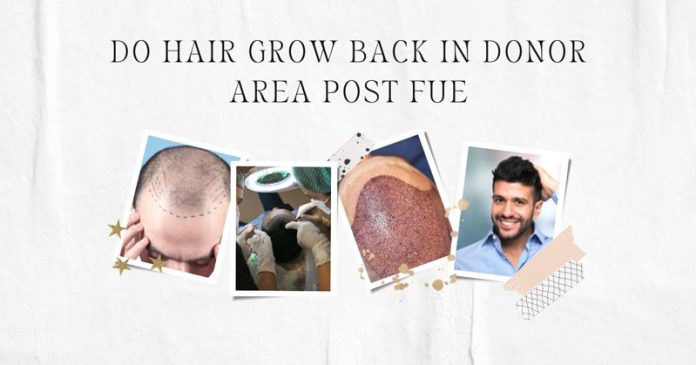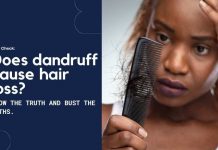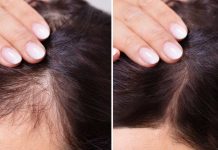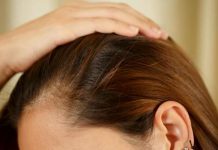Hair restoration techniques nowadays are famous worldwide. And it is evident that hair gradually grows back in the donor area after FUE within a few months. It is just a matter of time as people undergoing Follicular Unit Extraction have experienced hair progressively sprouting back.
A healthy scalp is the only catch that can show hair growth at the donor site. It is observed that while the recipient site loses hair, its’ roots will stay intact. And healthy new hair will, after all, will, eventually grow in the coming months. Follow-up appointments are essential for a surgeon to ensure your scalp is healthy. It is just as good as replacing your hair in a new location.
Understanding the FUE Technique
The FUE procedure is a sutureless method of hair restoration. It involves the extraction of hair follicles from the back of the head under local anesthesia.
- Special micro punches are utilized for single follicle extraction. And individually implanting them in the bald areas of the scalp where the presence of hair is either thin or absent. The entire donor area from the back of the head is trimmed to 1–2 mm in length. It is to enable the procedure on the day of surgery.
- The FUE technique has become more popular than the Follicular Unit Transplantation (FUT) procedure. FUE leaves behind almost no signs of extraction. While the FUT process leaves a linear scar at the site from where the donor strip is excised.
- The FUE procedure is considered safe, with minor possible side effects that go away a few days following treatment. These side effects may include bruising, sensitivity, and swelling.
FUE is an outpatient operation and can be done in multiple 2 to 4-hour sessions over several days. And you don’t have to interrupt your daily routine too much after FUE surgery.
Related Reading: Hair Transplant Cost in India
Healing and Regrowth in the Donor Area
It takes about two weeks for the donor area to heal after FUE surgery. A bandage is placed on the donor area after the operation. And all signs from the operation will disappear as you restore the natural aesthetic appearance.
The small individual incisions in the donor area after FUE hair transplant, at the most, will take 5-7 days to heal. And the hair in the donor area will grow back over time after hair transplant.
Medications are most commonly used as a treatment for diffusing hair loss within the donor area after the operation. Topical Minoxidil applications are generally prescribed for this purpose by the operating surgeon.
However, the donor area will look relatively thin after a hair transplant. It will have a sparse appearance, although it is not very noticeable when viewed from the outside. It is essential to utilize the services of an experienced surgeon. This is to remove the donor area entirely imperceptibly and meticulously.
Early Regrowth in the Donor Area
Early hair regrowth in the donor site is not at all possible. Hair regrowth will only occur in areas where the hair follicles are not entirely removed.
Your expert hair transplant surgeon will only harvest follicles from an area in the scalp with the densest concentration. More so from where the missing follicles will barely be noticeable. However, the surrounding hair around the donor spot will eventually camouflage the area where excisions were made.
Moreover, hair that is expected to grow from both sides of the incision under these circumstances will do the rest. Some may even extend through the incision after the scar has completely healed. It is why hair restoration experts try to keep the donor scar as thin as possible.
And thanks to ACELL therapies and Platelet Rich Plasma technology, hair regeneration alongside the extraction area has become a reality. Both effectively promote and facilitate follicle regeneration and donor scar healing.
Factors Affecting Donor Area Regrowth
The ideal donor areas for hair transplant can be both the ear side or behind the scalp. Donor sites often show signs of regrowth within a few months after the operation.
A few factors play a key role in determining donor area hair regrowth. But firstly, the type of procedure involved, like FUE or FUT, matters. Then, how you care for the donor area after hair transplant surgery can make a difference.
- The operation may damage or alter the blood supply to the scalp. And this may lead to problems like necrosis.
- Hair transplants at initial density can strain the blood supply. It can cause hair loss as well.
- Maximizing hair density is not required since hair that is transplanted would be good enough. It will provide the desired appearance without a marked difference.
- An imposing hair transplant operation will provide satisfactory results without restoring original hair density.
Therefore, a lot depends upon the aesthetic skills of a surgeon and post-operative care. Make it a point to pursue follow-up treatment instructions strictly, including the recommended drug intake to encourage regrowth and prevent infection.
Another way to increase hair density is to start with a few dietary changes. Some oils from coconut, lemongrass, rosemary, and tea tree can help hair growth. Massaging the scalp gently to increase blood flow is also welcome.
Consuming high-protein foods like milk, yogurt, and eggs will go a long way. Fresh fruits like blueberries, oranges, kiwis, and strawberries are also beneficial. Finally, it takes time, and it would help to be patient.
Long-Term Regrowth and the Final Outcome
The outcome after the hair transplant can be seen anywhere between 12 to 18 months. The vertex area represents the slowest regrowth as it is the least irrigated by blood. This is why regrowth here takes longer than it does for other areas.
The majority of the transplanted hair will fully grow after 1 year. The patient will now have significantly improved hair density and appearance. He may also be able to resume normal activities like using styling products and swimming.
Although the hair follicles thin as you age, the transplanted hair will not permanently fall out over time. Your hair transplant operation will hold well over the long term. It will most likely produce some hair for the rest of your life. Your hairline will not recede in the same ‘pattern’ as it did earlier.









